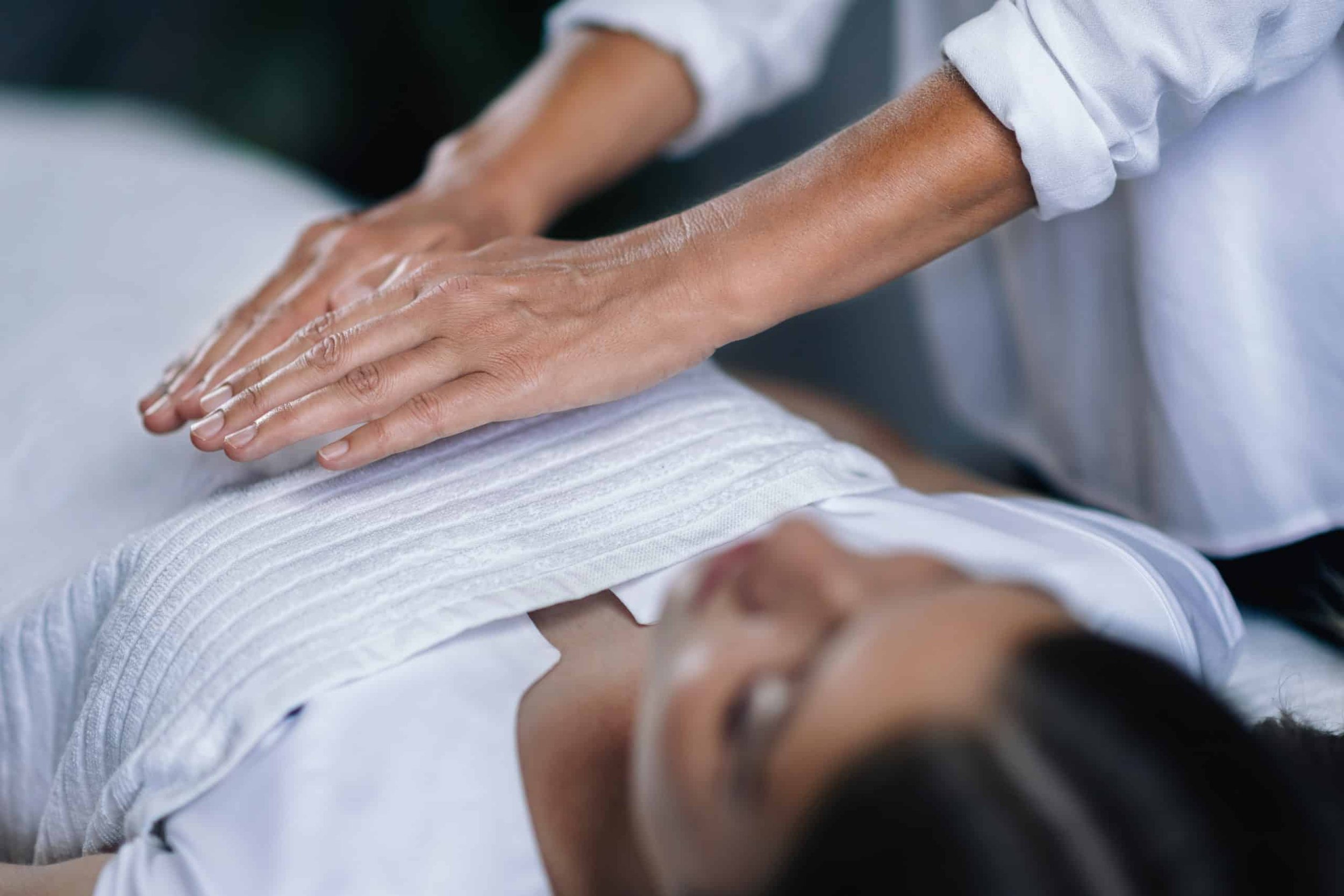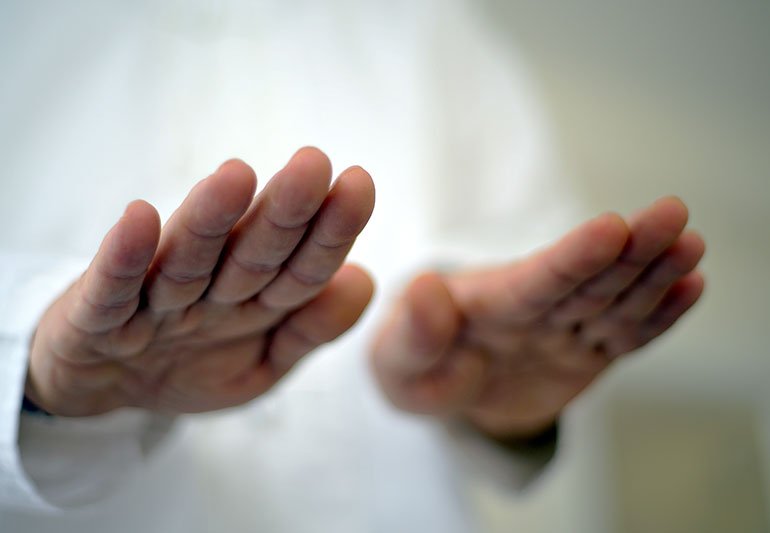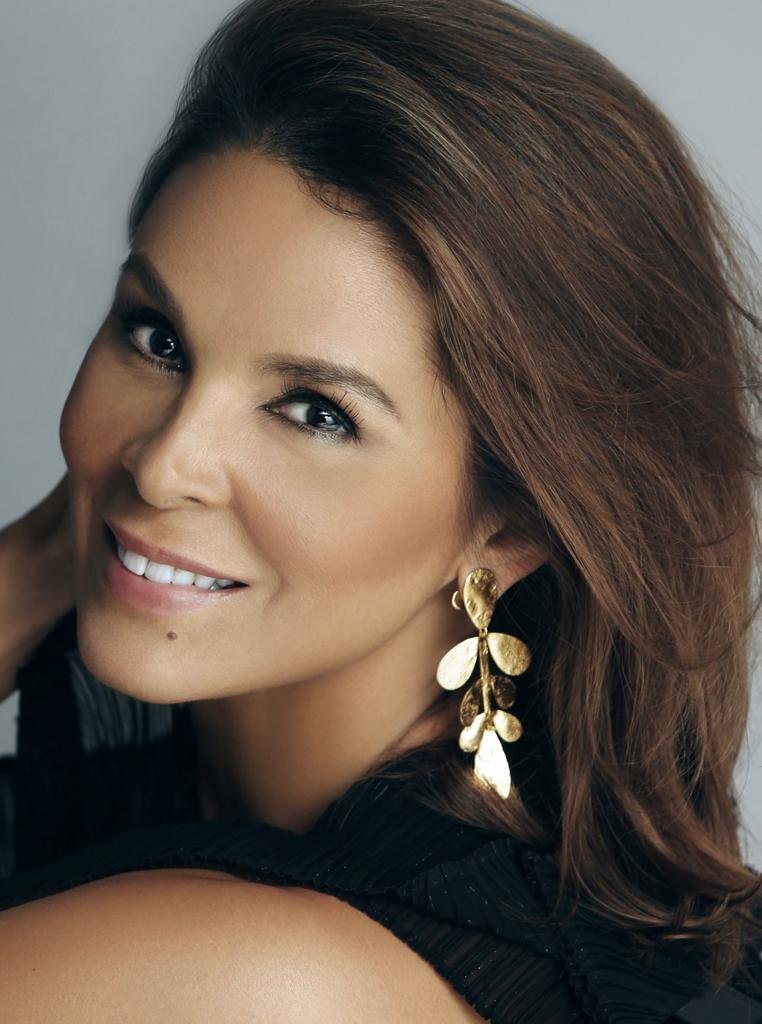Reiki: The Healing Power of Touch
The first time I experienced the benefits of Reiki, I was suffering from the most excruciating pain of a pinched nerve under my right shoulder blade.
I was on heavy painkillers, anti-inflammatory medications, undertaking cervical tractions, hot and cold therapies, electric muscle stimulations… you name it. I could not drive or carry a handbag and my circadian rhythm was in complete disarray; I was sleep-deprived because of the discomfort and pain, which made me moody and reactive to daily life.
Seeing me in this state, a close friend offered me a session with her Reiki healer, and as I am usually open to any therapy that involves human touch, I readily accepted and gladly welcomed those 50 minutes of caring hands hovering over my body. It turned out to be a great decision.
Highly aware and receptive to what was happening during the session, I surrendered to the experience. I felt the vibrations of her energy immediately and went into a very deep relaxation mode, a borderline trance: body weightless, mind calm, breath stable.
A Reiki treatment is a highly individual experience depending on what is going on in the body. People often report feeling deeply relaxed, while others report feeling heat, coolness or tingling where hands are placed. (Credit: medicalnewstoday.com)
What amazed me the most was that I could clearly hear the steady rhythm of my heartbeat. I felt the movement of her hands and the energy they emanated as she systematically moved from the crown chakra on the top of my head, down the third eye in the lower part of my forehead, past my throat, heart and solar plexus.
It was then that I began to feel intense heat on my shoulders, back and neck, although her hands were nowhere close to that area. I felt as if I were deeply asleep, but I could clearly understand her words and instructions as she ended the therapy.
That evening and for the next few weeks I slept through the night. The pain diminished notably after the first session and by my sixth session I had stopped all medications and painkillers, I could drive again and was slowly getting back to my yoga and weight training.
Too good to be true? Absolutely.
I experienced the benefits to such an extent that I became a Reiki practitioner myself soon after with a wonderful teacher and mentor, Elaine Grundy. The healing effects I experienced were my main motivation to learn and master this technique.
Ever since I can remember, physical touch has been my love language: I express gratitude, care and appreciation through touch, so it made so much sense that it was through touch that I received healing myself—on both a physical and an emotional level.
Learning how Reiki worked opened many doors into the complexity of people’s emotional and holistic needs. It also taught me that with systematic training, we can all learn to heal, not only others but ourselves. In fact, working on self-healing is a prerequisite for offering Reiki to others. So, in essence, the first individual who profits from mastering this practice is you.
Touch heals, there is no question about it, and in the fast-paced and hectic world we live in, recipients in need are many. (Credit: Depositphotos.com)
What is Reiki?
Let’s start with the basics. The concept of Reiki begins with its Japanese founder, a Tendai Buddhist monk called Mikao Usui, who eventually developed an interest in medicine, psychology, and theology. This interest prompted him to seek a way to heal himself—and others—through the “laying on of hands” method of healing. And because it was unattached to any specific religious belief, it could be accessible to everyone.
Translated from Japanese, “rei” means universal life and “ki” means energy, the energy that flows through all living animals.
Reiki is a defined energy healing technique that promotes relaxation, reducing stress and anxiety through gentle touch. At the core of every treatment is the base principle of flowing energy from the practitioner to the patient. This energy transfer comes through the hands, which are gently placed on the body or very close to it in a hovering manner. Through this process, the trained practitioner can pinpoint and locate the areas of low energy and chakra blockages, restoring a balanced flow of energy throughout the entire body.
Reiki masters use energy centers—also called chakras—as their guide. They believe that we all possess seven chakras, each coinciding with a gland in our body. Since each chakra relates to the specific spiritual, emotional, psychological, and physical aspects of our wellbeing, their blockage can lead to misalignment. Balancing these energy centers, on the other hand, leads to wellbeing and good health.
What happens during a Reiki session?
A Reiki treatment is a highly individual experience; the results depend on what is going on in your body and how open you are to receiving this type of healing.
A Reiki session typically involves the recipient lying on a treatment table or sitting on a chair while remaining fully clothed. Treatments usually last between 45 and 60 minutes, during which a Reiki practitioner will place his/her hands gently on you or just hover above the body. The practitioner will change the positioning of his/her hands as the session progresses. All the recipient needs to do is relax, something that more often than not will happen quite naturally.
Many people will feel a sense of release after Reiki, but they are just as likely to experience a range of emotions, from exhaustion to elation, or a whirlwind of reveries in which powerful memories are triggered. Others may feel their body twitch or move as if it were naturally readjusting itself. Some patients will start to cry, releasing grief or sadness, while others go into deep relaxation and could fall asleep.
Our hands are healing tools we often forget to fully use. Through Reiki, a soft caress or a tight grip, we can comfort a crying baby, calm a toddler, reassure a teenager, support our partner, or console our elders. (Credit: Bannerhealth.com)
Regardless of how you react or feel, Reiki will be beneficial for you at many levels. Everyone is different and every treatment will be unique. It is important that you pay close attention to how you feel after a session. This could be quite dramatic, like realizing you are free from pain for the first time in months, or feeling like a huge emotional weight has been lifted from your shoulders. It could also be quite simple, like getting a really good night’s rest or an improvement in your appetite. “The most common reports are of a release of stress and deep relaxation,” according to MedicalNewsToday.com.
Such observations, however big or small, can be interpreted as outward effects of your body naturally restoring its balance. Being observant of such changes will help you measure Reiki’s impact on your wellbeing.
Once you have experienced Reiki’s benefits, you may feel the urge to learn this practice yourself. Reiki as a practice can be a powerful tool for self-care and personal transformation.
Who can benefit from Reiki?
Babies and infants can benefit, as hands placed on certain parts of their body ease colic and restlessness. Young children can ease separation anxiety from parents once school begins. Teenagers can seek comfort during those difficult hormonal years. It has been recommended for expectant mothers, post-partum women and through menopause changes later in life.
Reiki can help babies sleep longer and more restfully, soothe colic, calm separation anxiety in infants and help with teething pain. (Credit: Healthline.com)
Reiki is also recommended as a healing and fortifying tool in personal relationships, as it opens up your capacity to express love. It can also do wonders for your ability to manifest empathy. Put these two together and you will become more deeply connected to your partner.
People living with weight health conditions may be interested in trying it alongside their regular treatments. For instance, patients with cancer may find Reiki beneficial to help them relax. The gentle nature of this type of therapy may have a soothing effect on patients who find themselves overwhelmed with fear, anxiety and stress before or after radiation or chemotherapy. It should be pointed out that Reiki should never take the place of medical treatments.
In the United States, more than 800 hospitals currently offer Reiki services for their patients. Many of them are highly reputable and prominent institutions such as the Memorial Sloan Kettering Cancer Center, Johns Hopkins Integrative Medicine’s Digestive Center, NY-Presbyterian Hospital/Columbia, Yale New Haven Hospital, and the Dana-Farber/Harvard Cancer Center.
Because of the many positive outcomes on patients, some hospitals offer Reiki training to their staff and to the community as well. Hospitals introducing Reiki to the public give it visibility and lend credibility to a practice that is often undervalued.
It is not hard to imagine that a hospital patient awaiting surgery or chemotherapy might feel relieved to have someone place a hand gently and unhurriedly where the hurt or fear is with the intention of alleviating their suffering. (Credit: UKHealthcare.com)
Medical researchers at the University of Texas have also conducted several studies to assess the effectiveness of Reiki as a means of increasing relaxation and reducing stress. Preliminary results showed that anxiety and blood pressure levels are reduced, suggesting a heightened state of relaxation in patients treated with Reiki.
Another study, conducted at the Institute of Neurological Sciences, South Glasgow University Hospital, divided 45 patients into three groups: one group was given Reiki, the control group was given rest, and the third was given a placebo treatment, which mimicked the movements of Reiki. It found that heart rate and blood pressure decreased significantly in the Reiki group compared to both the placebo and control groups.
Your own hands are powerful sources of energy and you should learn how to use them on yourself. If you want to extend the benefits after a session, you can make that initial boost last a bit longer.
How to do Reiki on yourself
Find a calm environment where no one will disturb you, lie down or sit on a chair. You can then perform some hand positions to allow the flow of energy through your body.
Start with your eyes, keeping your hands over them for a minute or two, then your head, chest, ribs, stomach and lower back, ending with your legs and feet if you are in a sitting position. Each time you rest your hands on a specific area, focus your attention on it and try to feel energy flood the region. You can combine this with your meditation practice for enhanced self-healing.
Once you have experienced the benefits of Reiki through receiving it you may feel the pull to learn this practice yourself. As well as being a wonderful gift to others reiki as a practice can be a powerful; tool for self-care and personal transformation. (Credit: NIH.com)
To skeptics, Reiki might sound like a load of hogwash, but if you are fortunate enough to remember a caring parent or caregiver who placed a loving hand on your head when you were running a fever, on your tummy after you ingested a whole bag of candies, or on your scraped knee when you fell to make the pain go away, it is not hard to imagine that a hospital patient awaiting surgery or immunotherapy might feel relieved to have someone place a hand gently and unhurriedly where the hurt or fear is, intending to alleviate their suffering and dread.
Touch heals; there is no question about it. And in the fast-paced and hectic world we live in, there are people in need who could greatly benefit from Reiki. That this increased care is coming from another human being’s hands might translate into lowered blood pressure, abated pain, less anxiety or reduced bleeding—as has been observed in hospital patients who experienced this holistic approach—would seem like a logical enough reason to keep this practice close at hand. Literally.
Claudia Bermudez Hyun | guest contributor | ws
This article was first published on January 10, 2023 in the Philippines Star Lifestyle Section where the author is a regular guest columnist.
Claudia Bermudez-Hyun has been on a nutrition and holistic wellness journey for the last 20 years; she understands the relationship between mind and body and how to heal through proper food, emotional balance and spirituality. She is a practicing Integrative Health Coach and certified yoga therapist and teacher. She is also a regular Health and Wellness writer for the Philippine Star. The author can be followed in IG @claudiabermudezh







